Some of the links in this post may be affiliate links.
If you are looking for a twist (literally) on the common spider plant, then Chlorophytum comosum ‘Bonnie’ is for you! Commonly known as the Curly Spider Plant, this plant comes in both plain green as well as a variegated form with a white stripe through each leaf center. It is smaller than most spider plants, but the care is identical.
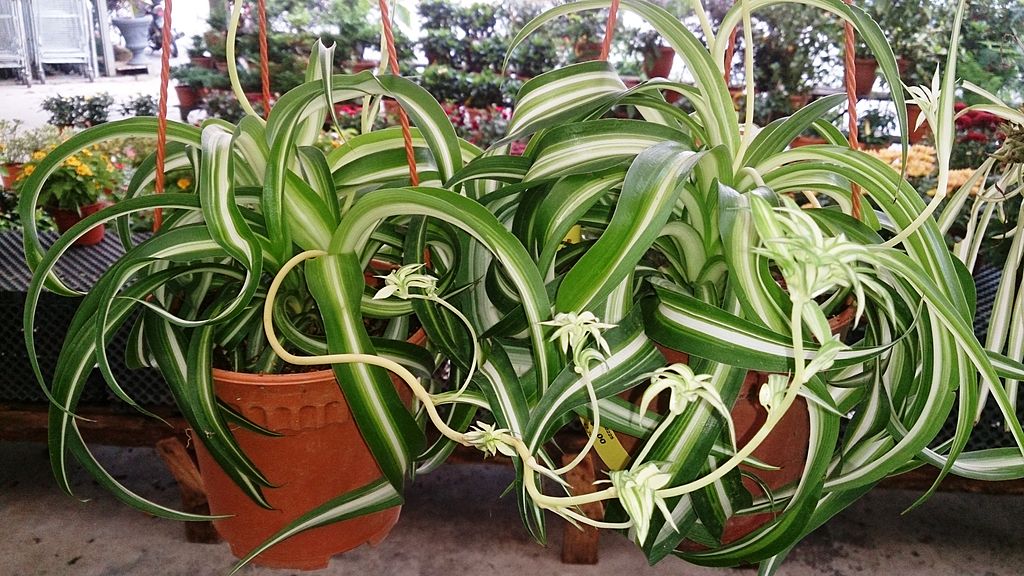
This delightful houseplant is native to Africa and is a member of the Asparagaceae (Asparagus) plant family.
Chlorophytum comosum ‘Bonnie’ Care Tips
Here are 5 main tips for indoor care of the Curly Spider Plant:
1. LIGHT & TEMPERATURE
Although this plant tolerates lower light, the variegation in ‘Bonnie’ will be more pronounced with appropriate light. In lower light, the growth will be slower and it may even lose its stripes.
You don’t necessarily want or need to have this plant in full sun all day, but situate this plant right in front of a window for best results. Anywhere from 100% bright indirect light, up to about 2-3 hours of direct sun will work beautifully for spider plants.
As far as temperature goes, they do like it on the warmer end. I always say that for most houseplants, if you feel comfortable, your plant will too. Avoid minimum temperatures below 55F (13C).
2. WATERING
Spider plants prefer an evenly moist potting mix so try not to allow the potting mix to dry out completely. Doing so repeatedly will result in a very ratty looking plant.
The ideal case would be to allow the top quarter or so of the potting mix to dry out. Simply use your finger to test the moisture.
Be aware that the drier the potting mix gets, the curlier the leaves will be! This can also serve as an indication of when to water, but you should still feel the potting mix to be sure.
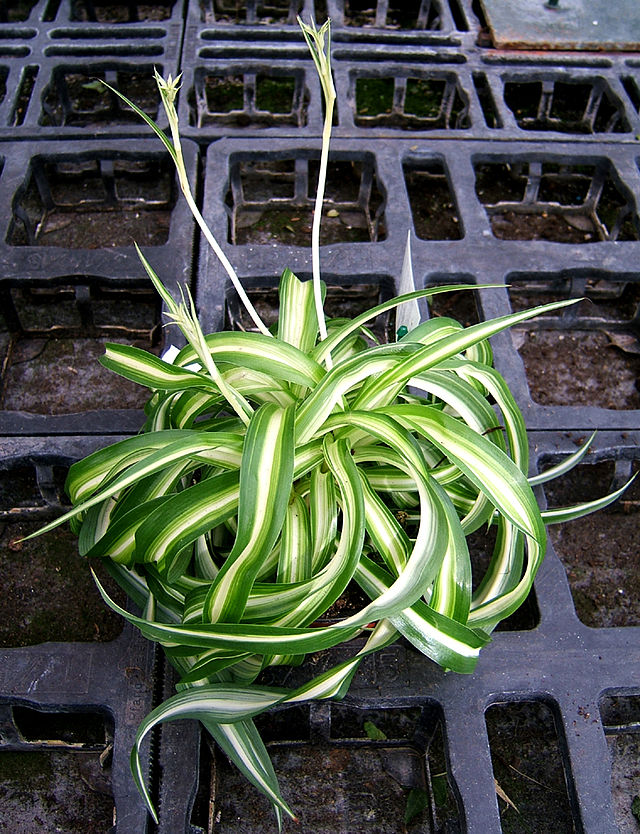
When you water, always water thoroughly and allow excess water to escape the drainage hole(s). Never allow your plant to sit in water for long periods of time otherwise you can encourage root rot.
For more detailed information, check out my blog post on how often to water spider plants. The answer may be more complicated than you think, but the post will clarify a lot of misconceptions.
3. SOIL & REPOTTING
A potting mix of 3 parts all-purpose mix plus 1 part perlite is a great blend for this plant. For a more in depth review of potting mixes, check out my blog post on 3 best potting mixes for spider plants.
Under decent conditions, spider plants are rapid growers and will soon require repotting as they will tend to quickly fill the pot with their fleshy roots. Be sure to check out my guide to repotting houseplants so that you know when and how to repot properly.
Repotting is best done during active growth, which in most cases would be Spring and Summer time. Always use a pot with a drainage hole!
4. FERTILIZING
Over-fertilizing can result in the plant producing less plantlets. In addition, these plants store nutrients in their tubers so it is not necessary to worry too much about fertilizing frequently.
That being said, I recommend using Dyna-Gro Grow every 2-4 weeks throughout the growing season. It is an amazing, complete formulation that has all the macro and micronutrients that plants need. I use it on all of my houseplants with wonderful results.
5. PROPAGATION
Like any other spider plant, the Curly Spider Plant will produce runners with abundant plantlets that can be easily propagated. As a result of this, they’re best displayed as hanging baskets.
There are a couple way to propagate this plant.
The first way is to pin any plantlets, while still attached to the mother plant, onto a pot of soil. Once the pup starts growing and is rooted, simply cut it free from the mother plant.
The other way to propagate is to cut the plantlet or pup off the mother plant, place it in water to root (most of the time, they already have small roots visible), and then plant it when roots are about an inch long.
Commonly Asked Questions
Why does my curly spider plant have brown tips?
There are many reasons why this can occur. It can result from extremes in potting mix moisture (either too wet or too dry), salt buildup from fertilizers in the potting mix, and low humidity. Spider plants are also reportedly sensitive to fluoride in tap water. You can prune the brown tips to keep the plant tidy. Check out my blog post that details several reasons why spider plants get brown tips.
Why is my curly spider plant losing curl?
Ironically, if you pay too much attention to your plant, the resulting leaves will be straighter and not as curly. Drier potting mix will result in much curlier foliage, but don’t take it TOO dry otherwise you will get a lot of yellow and brown leaves.
Curly spider plant vs. spider plant?
The Curly Spider Plant is a somewhat more compact version with curlier leaves compared to the plain old Spider Plant. The care is identical.
Is the Curly spider plant toxic to pets?
According to the ASPC (American Society for the Prevention of Cruelty to Animals), spider plants are non-toxic to dogs, cats, and horses. Cats seem to love these plants, but you can rest assured that they’re non-toxic!
What are the benefits to growing Curly spider plants?
In addition to being easy to grow, spider plants are one of the top plants to purify your indoor air and help to remove many indoor air pollutants, particularly formaldehyde and carbon monoxide.
Why does my Curly spider plant have yellow or brown leaves?
Yellowing leaves can result from a variety of things. The most common reason is an imbalance in soil moisture. If your potting mix went completely dry, or conversely, stayed too wet for too long, you can get yellow leaves. Be sure to check out my blog post on causes of yellow leaves in houseplants for a complete understanding.
That’s all folks! Do you have a Curly spider plant? Comment below. I’d love to hear!

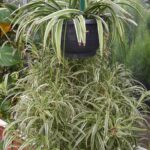
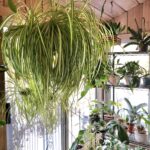
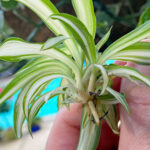
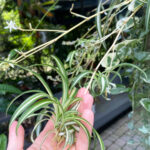
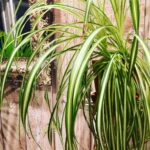
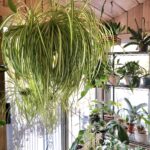
Rebecca
Wednesday 3rd of July 2024
Ok..my curly is growing "like a weed" and it's shooting off long stemy-things with white flowers (which I'm assuming is the little ones) what the heck do I do with them?
Raffaele Di Lallo
Friday 5th of July 2024
Hi Rebecca! This is just how they grow. I would leave them because you will get baby spider plants on those long stems :-)
Joyce
Sunday 28th of May 2023
How can I tell if my curly spider plant needs to be repotted? I just purchased an 8”.
Raffaele
Wednesday 31st of May 2023
Hi Joyce! Once you can see roots at the bottom of the pot through the drainage holes, you can repot.
Tammy
Friday 20th of January 2023
My Curley spider plant looks like a giant root coming out of the soil. What do you think I should do?
Raffaele
Sunday 22nd of January 2023
Hi Tammy! I would just leave it alone. If the plant is root bound though, go ahead and give it a slightly bigger pot.
Alice
Saturday 14th of January 2023
Do you water the curly spider plant from top or bottom?
Raffaele
Sunday 22nd of January 2023
I always topwater plants. There is nothing wrong with bottom watering if that's what you prefer, but if you fertilize, be sure to top water periodically with plain water so that you don't have any fertilizer salts build up in the potting mix.
Barbara
Friday 7th of January 2022
My new curly spider plant has to sit on the kitchen counter with a northern exposure. Ok??
Raffaele
Monday 10th of January 2022
That should be fine Barbara. If you notice that any of the leaves are weak and flopping over, you may want to consider a higher light situation.